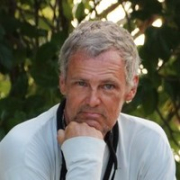

Splunk Enterprise Security and Elastic Observability are both prominent platforms in data analysis and security operations. Splunk Enterprise Security seems to have the upper hand with its comprehensive threat detection and analytics capabilities, making it a preferred choice for large organizations. Elastic Observability stands out for its real-time log data collection and integration flexibility, particularly excelling in hybrid cloud environments.
Features: Splunk Enterprise Security offers advanced threat detection, operational intelligence, and machine learning tools, providing seamless third-party integrations and robust incident management systems ideal for large-scale operations. Elastic Observability is noted for its real-time log analytics, integration flexibility, and open-source foundation, which supports real-time monitoring and performance tracking in hybrid environments.
Room for Improvement: Splunk Enterprise Security users face challenges with setup complexity, GUI limitations, high training costs, and integration capabilities. Elastic Observability needs enhancements in asset discovery, machine learning functionalities, and simplification of its complex licensing model.
Ease of Deployment and Customer Service: Splunk Enterprise Security provides flexible deployment options and strong customer support, though response times can vary. Elastic Observability ensures easier deployment, especially in hybrid environments, but requires more comprehensive support engagement.
Pricing and ROI: Splunk Enterprise Security represents a significant investment, offering substantial ROI with its robust capabilities. Elastic Observability is more cost-effective with competitive pricing, appealing to budget-conscious enterprises. Both solutions provide significant value based on organizational scale and specific needs.
Elastic Observability has saved us time as it's much easier to find relevant pieces across the system in one screen compared to our own software, and it has saved resources too since the same resources can use less time.
The documentation for Splunk Enterprise Security is outstanding. It is well-organized and easy to access.
We couldn't calculate what would have been the cost if they had actually gotten compromised; however, they were in the process, so every investment was returned immediately.
On average, my SecOps team takes probably at least a quarter of the time, if not more, to remediate security incidents with Splunk Enterprise Security compared to our previous solution.
Elastic support really struggles in complex situations to resolve issues.
Their excellent documentation typically helps me solve any issues I encounter.
We have paid for Splunk support, and we’re not on the free tier hoping for assistance; we are a significant customer and invest a lot in this service.
I have had nothing but good experiences with Splunk support, receiving timely and helpful replies.
We've had great customer success managers who have helped us navigate scaling from 600 gigs to 30 terabytes.
I rate the scalability of Elastic Observability as a ten, as we have never seen issues even with a lot of data coming in from more customers, provided we have the appropriate configuration.
Elastic Observability seems to have a good scale-out capability.
Elastic Observability is easy in deployment in general for small scale, but when you deploy it at a really large scale, the complexity comes with the customizations.
We currently rely on disaster recovery and backup recovery, which takes time to recover, during which you're basically blind, so I'm pushing my leadership team to switch over to a clustering environment for constant availability.
They struggle a bit with pure virtual environments, but in terms of how much they can handle, it is pretty good.
It is easy to scale.
There are some bugs that come with each release, but they are keen always to build major versions and minor versions on time, including the CVE vulnerabilities to fix it.
It is very stable, and I would rate it ten out of ten based on my interaction with it.
I would rate the stability of Elastic Observability as a ten, as we don't experience any issues.
They test it very thoroughly before release, and our customers have Splunk running for months without issues.
Splunk has been very reliable and very consistent.
It provides a stable environment but needs to integrate with ITSM platforms to achieve better visibility.
For instance, if you have many error logs and want to create a rule with a custom query, such as triggering an alert for five errors in the last hour, all you need to do is open the AI bot, type this question, and it generates an Elastic query for you to use in your alert rules.
It lacked some capabilities when handling on-prem devices, like network observability, package flow analysis, and device performance data on the infrastructure side.
Some areas such as AI Ops still require data scientists to understand machine learning and AI, and it doesn't have a quick win with no-brainer use cases.
Improving the infrastructure behind Splunk Enterprise Security is vital—enhanced cores, CPUs, and memory should be prioritized to support better processing power.
Splunk Enterprise Security is not something that automatically picks things; you have to set up use cases, update data models, and link the right use cases to the right data models for those detections to happen.
For any future enhancements or features, such as MLTK and SOAR platform integration, we need more visibility, training, and certification for the skilled professionals who are working.
The license is reasonably priced, however, the VMs where we host the solution are extremely expensive, making the overall cost in the public cloud high.
Elastic Observability is cost-efficient and provides all features in the enterprise license without asset-based licensing.
Observability is actually cheaper compared to logs because you're not indexing huge blobs of text and trying to parse those.
I saw clients spend two million dollars a year just feeding data into the Splunk solution.
The platform requires significant financial investment and resources, making it expensive despite its comprehensive features.
I find it to be affordable, which is why every industry uses it.
The most valuable feature is the integrated platform that allows customers to start from observability and expand into other areas like security, EDR solutions, etc.
the most valued feature of Elastic is its log analytics capabilities.
All the features that we use, such as monitoring, dashboarding, reporting, the possibility of alerting, and the way we index the data, are important.
This capability is useful for performance monitoring and issue identification.
I assess Splunk Enterprise Security's insider threat detection capabilities for helping to find unknown threats and anomalous user behavior as great.
Splunk Enterprise Security provides the foundation for unified threat detection, investigation, and response, enabling fast identification of critical issues.
| Product | Market Share (%) |
|---|---|
| Splunk Enterprise Security | 7.7% |
| Elastic Observability | 1.3% |
| Other | 91.0% |


| Company Size | Count |
|---|---|
| Small Business | 9 |
| Midsize Enterprise | 4 |
| Large Enterprise | 16 |
| Company Size | Count |
|---|---|
| Small Business | 110 |
| Midsize Enterprise | 50 |
| Large Enterprise | 257 |
Elastic Observability offers a comprehensive suite for log analytics, application performance monitoring, and machine learning. It integrates seamlessly with platforms like Teams and Slack, enhancing data visualization and scalability for real-time insights.
Elastic Observability is designed to support production environments with features like logging, data collection, and infrastructure tracking. Centralized logging and powerful search functionalities make incident response and performance tracking efficient. Elastic APM and Kibana facilitate detailed data visualization, promoting rapid troubleshooting and effective system performance analysis. Integrated services and extensive connectivity options enhance its role in business and technical decision-making by providing actionable data insights.
What are the most important features of Elastic Observability?Elastic Observability is employed across industries for critical operations, such as in finance for transaction monitoring, in healthcare for secure data management, and in technology for optimizing application performance. Its data-driven approach aids efficient event tracing, supporting diverse industry requirements.
Splunk Enterprise Security delivers powerful log management, rapid searches, and intuitive dashboards, enhancing real-time analytics and security measures. Its advanced machine learning and wide system compatibility streamline threat detection and incident response across diverse IT environments.
Splunk Enterprise Security stands out in security operations with robust features like comprehensive threat intelligence and seamless data integration. Its real-time analytics and customizable queries enable proactive threat analysis and efficient incident response. Integration with multiple third-party feeds allows detailed threat correlation and streamlined data visualization. Users find the intuitive UI and broad compatibility support efficient threat detection while reducing false positives. Despite its strengths, areas such as visualization capabilities and integration processes with cloud environments need enhancement. Users face a high learning curve, and improvements in automation, AI, documentation, and training are desired to maximize its potential.
What Are the Key Features of Splunk Enterprise Security?In specific industries like finance and healthcare, Splunk Enterprise Security is instrumental for log aggregation, SIEM functionalities, and compliance monitoring. Companies leverage its capabilities for proactive threat analysis and response, ensuring comprehensive security monitoring and integration with various tools for heightened operational intelligence.
We monitor all Log Management reviews to prevent fraudulent reviews and keep review quality high. We do not post reviews by company employees or direct competitors. We validate each review for authenticity via cross-reference with LinkedIn, and personal follow-up with the reviewer when necessary.